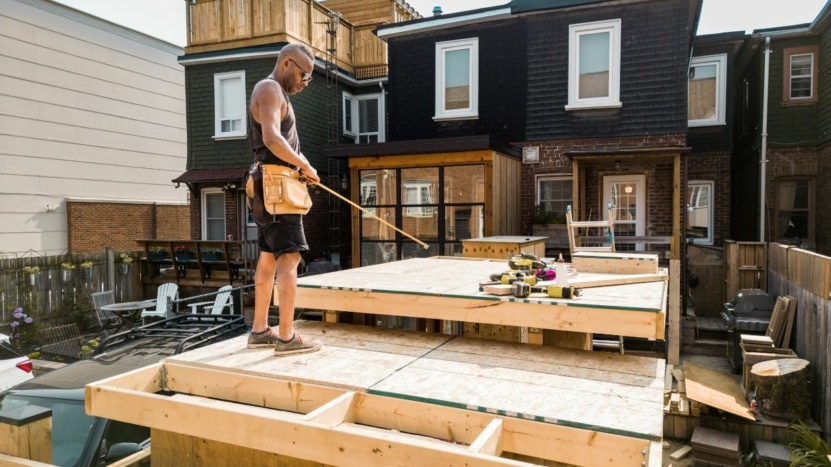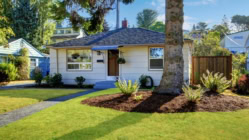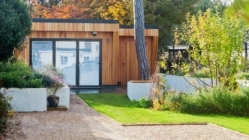I have been blogging about ADUs repeatedly over the last few years because states and local governments are so aggressively encouraging their construction – as a way to solve our housing shortage.
California has been leading the charge with very relaxed zoning and permitting requirements and even grants in many cases – and some regions in California are now literally exploding with ADUS.
Here is my most recent blog from December: Reasons to LOVE ADUs, In-Law Units, Granny Units, Au Pair Units, Guest Houses, Garden Cottages, Casitas… and Whatever Else You Call Them, and here are two blogs I wrote prior to that: Valuing An ADU; and Financing And Building ADUs Or In-Laws.
I am revisiting the topic today because I missed two major financing options: Renovation/Construction Loans offered by Fannie Mae and Freddie Mac.
These renovation/construction loans allow properties to be appraised as “future value” or “subject to completion of the ADU,” meaning appraisers can then appraise the properties for what they WILL be worth once the ADU is completed.
Fannie and Freddie will then lend against that future value up to 97% loan-to-value for low-balance loans and up to 95% loan-to-value for high-balance loans. These loans can be done as refis or to finance a purchase too.
Four Ways To Finance ADU Construction
Below are four of the best options available for financing the construction of an ADU.
1. Home Equity Line of Credit (HELOC).
HELOCs, as most readers know, are simply large lines of credit secured by a residential property. They have adjustable rates and can be obtained with very few or no costs at all.
Pros: Low cost. No interest due until funds are borrowed. Interest only payments. No contractor bids or any information regarding ADU required.
Cons: Adjustable interest rate; May not be large enough to cover cost of project.
2. Cash-Out Mortgage.
A cash-out mortgage is simply a new larger mortgage (at current interest rates) that replaces your current mortgage. The difference between the new mortgage and the old mortgage is the “cash out.”
Pros: Fixed-rate loan. No contractor bids or any information regarding ADU required.
Cons: Rate could be higher than the rate for your current loan. Might not provide enough funds to cover cost of project. Interest on cash-out portion accrues immediately.
3. Fannie Mae’s HomeStyle Renovation Program.
This is a construction loan of sorts where borrowers get approved for a loan that is large enough to cover all of the costs associated with ADU construction. The appraisal will be done on a “Subject To” basis, meaning the appraiser will appraise the property as if the ADU has already been constructed. Because of this, the appraiser will need to see the plans and specifications for the ADU when she appraises the property. Underwriters will also need to see the plans, specifications and bids from a licensed and approved contractor before the loan is approved.
Pros: Fixed-rate loan. Will provide enough funds to complete the project. Can be used in conjunction with a purchase or a refinance.
Cons: Rate could be higher than the rate for your current loan. Cash is distributed in draws. Plans, specifications and bids by a licensed and approved contractor need to be provided for loan approval.
4. Freddie Mac’s CHOICERenovation Program.
This is a construction loan of sorts (very similar to Fannie Mae’s offering) where borrowers get approved for a loan that is large enough to cover all of the costs associated with ADU construction. The appraisal will be done on a “Subject To” basis, meaning the appraiser will appraise the property as if the ADU has already been constructed. Because of this, the appraiser will need to see the plans and specifications for the ADU when she appraises the property. Underwriters will also need to see the plans, specifications and bids from a licensed and approved contractor before the loan is approved.
Pros: Fixed rate loan. Will provide enough funds to complete the project. Can be used in conjunction with a purchase or a refinance. Freddie Mac allows borrowers to use rental income from the ADU to help qualify for the loan.
Cons: Rate could be higher than the rate for your current loan. Cash is distributed in draws. Plans, specifications and bids by a licensed and approved contractor need to be provided for loan approval.
























